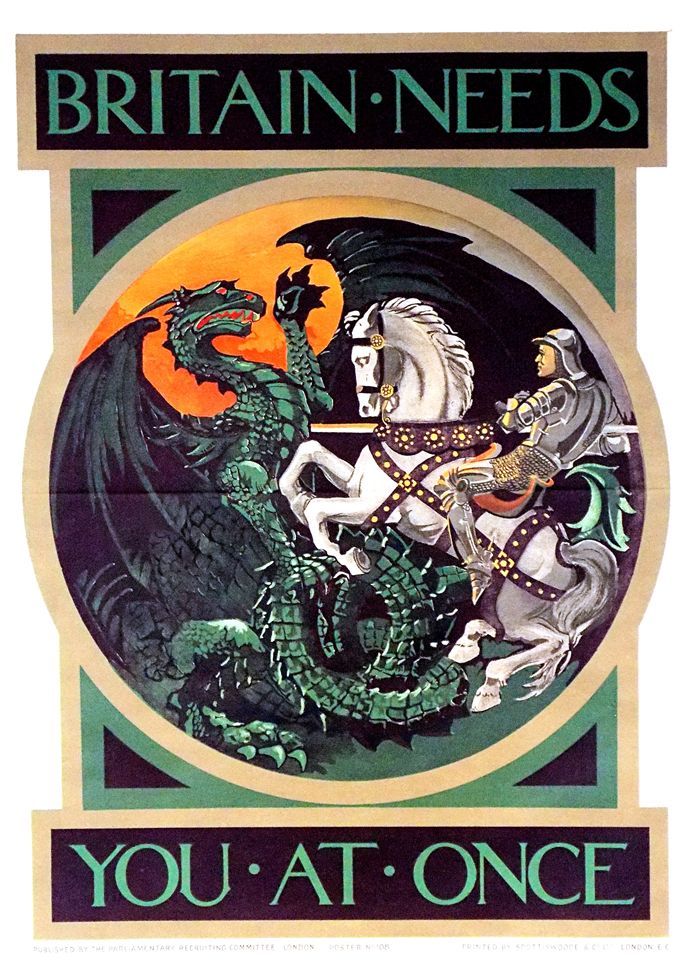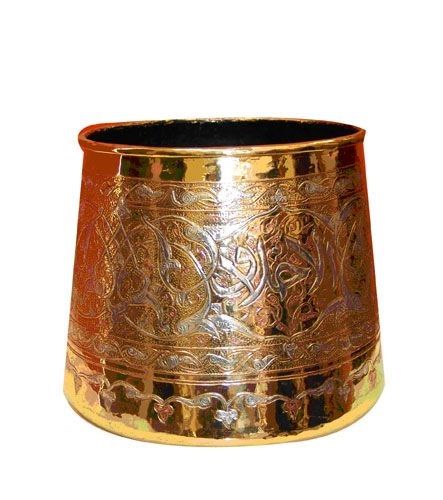I guess it won’t surprise anyone that Immigration and Customs Enforcement has been tapped again for a Hunted. This time there’s no supervillain component, it’s just (“just”) the agency, so in looking for villains to create, and seeing the Crusader on the Curator’s sheet, I focused on the “trapped between two worlds” feature that both heroes share. That led me to consider one of my pet hates, the smug, oh-so clean-handed think tank culture that composes one of the chambers of the revolving door among executive government appointments, academia, corporate ownership, lobbying, and the military.
I’ll spare you my machine-gun fire, no-missed-syllables speech about the historical Crusaders, Scott’s Ivanhoe, the F-8 Crusader missile, Huntingdon’s The Clash of Civilizations, and Feffer’s critique in Crusade 2.0. But it was running in my head in making the relevant character and playing his speech scene was nothing but channeling the reality underlying the outlook I’ve been forced to listen to myself far too many times.
And as if that weren’t enough, the two heroes also directly tie the same issue to the Mexican-American border and the larger history of the Americas relative to European power and narrative-building. I built Apocrypha toward this end, who might remind you a little bit of Brimstone from the Defiants game. However, the members of Ghost were all broken, retooled, and ultimately exploited results of the War on Terror/Drugs, whereas these villains are extremely happy, pleased, and triumphant sorts instead, representing the clean-handed think tank consortium I had in mind.
 Here’s a fun detail to illustrate that: I image-searched for a portrait that would reflect my notions for C. Brett Bell, essaying “think tank speaker” on the not-very-hopeful chance that it might yield the kind of self-satisfied, empowered smirk I wanted. I expected to have to run multiple searches using various terms … but instead, at the very first click using that phrase, I was confronted by a whole wall of photos of people who, despite varying ages and shapes and sizes and other details, all featured exactly that expression. Picking the one who suited Bell took fifteen seconds.
Here’s a fun detail to illustrate that: I image-searched for a portrait that would reflect my notions for C. Brett Bell, essaying “think tank speaker” on the not-very-hopeful chance that it might yield the kind of self-satisfied, empowered smirk I wanted. I expected to have to run multiple searches using various terms … but instead, at the very first click using that phrase, I was confronted by a whole wall of photos of people who, despite varying ages and shapes and sizes and other details, all featured exactly that expression. Picking the one who suited Bell took fifteen seconds.
We moved into our first session with a further prep-and-rules talk. I’ve snipped it for viewing purposes, but one topic really matters: how to construct the “I show up when there’s danger” Superman situation-framing that Jason wanted for Carhartt. I might have to make a whole little design-update video to talk about all conditional and triggered effects in the game, and how such things need to be reference points, not manifestations of GM preference. It’s complicated in this case due to the Involuntary Limitation and its role in situational framing, so I think I’ll even have to break it out into a flow chart.
In play, I liked the fight a lot because it displayed a really nice trade-off for who gets hammered by what, and who helps whom do what. If you grunt through the fight details, you’ll see this sequence:
- The Curator gets hit by a High-Impact Blast + Entangle, then struggles hard to get out; also, it’s strong enough so that he can only chip away at it, and he fails the roll to adjust his Variable Power Pool for exactly the right tool he needed
- Carhartt pulls him out of the Entangle (despite being told to go protect the artifacts)
- Carhartt gets hit by a Lethal Intelligence Drain and is forced pretty much just to stand there, as Jason didn’t want him to lash out blindly (nor was he compelled to by rules, e.g., Enrage or a relevant Psychological Limitation)
- The Curator, now free, manifests his big fuckin’ horse and a glowy mace to bop-and-Flash the Crusader a good one; this is why Apocrypha chose to escape, as he knew Carhartt would be recovering from the Drain imminently
I saw it as pretty good example of “neither of us can do this alone,” as well as the larger point that they were very dangerous foes and
Here’s another detail, for which I was pleased because I did have to look at the rules, and was rewarded by doing so. This is when the Curator grabbed at the artifact the Crusader had stolen.
The visuals on that are cool too, although I unfortunately didn’t say them – that he reached right into the light-vortext the villains were escaping into, in a risky-looking way, and the vortex faded, leaving him standing there with the satchel and its precious contents in his hand. That would very likely have cued some line of excellent dialogue along the lines of “Wherever they’re going, they won’t have this.”
Anyway, how did that work mechanically? The default would be a Grab, which is the Crusader’s Offensive Combat Value (Dexterity) against the Crusader’s Defensive one. The latter was 0 at the moment due to being Flashd, which would have been super-easy. And that would be OK, except that Apocryphas was helping the Crusader in a “get in here, right through here” way and therefore was the more active agent involved. But since Apocrypha wasn’t trying to defend the artifacts and was, if you will, “kind of busy,” rolling against his Defense wasn’t the way to go either. So it really just became a feat of Dexterity, with the villains’ escape-actions making it necessary to roll, but not relevant enough to act as defense.
Let’s see, what else …
- I forgot to apply Carhartt’s Vulnerability to magic, so he should have taken 24 Knockout, not 2. I was focusing on his resistant defenses which kept the attack’s Lethality from actually hurting him, and besides, his Body score is high enough that even the correct amount of damage wouldn’t quite have Stunned him. Still, it would have been good to see that this very tough hero can still get hit hard once in a while.
- Yet again, the Variable Power Pool was awesome. In order to avoid in-play paralysis, Rick had pre-written a short list of uses for it, but both of us were pleased to see that none of the attacks were immediately helpful, so he improvised uses in exactly the way that Framework optimizes. (We did get to see the horse though, which is cool)
- After some angst, I have finally decided to junk the vintage standby Limitation “Only in hero identity,” which is redundant with the Special Effects rules and the current Limitations, and has almost always served as nothing but bullshit point-mongering.
- I think the game maybe need some rules & practices for characters trying to escape a situation: relevant maneuvers, rolls, and other things, and certainly some explicit options for those characters who’d like to prevent them from doing so, or to set up for a relevant pursuit.
Finally, we had a good discussion afterwards for presenting the whole rules-set or product properly, which included a sketch of this diagram.
Its meaning is that both Steve Long’s 6th edition and my Champions Now represent very personal takes on different specific founding groups of texts. So the two are not immediately comparable or to be considered competitors, because (i) the “directions” of the respective jumps are necessarily and understandably different, and (ii) the launch-points are different.
There’s a ton more to unpack from the diagram, especially the extreme discontinuity between the first-generation and the dedicated (rather than merely nominal) Hero System version. In retrospect, it might even have served the 2010 publication well not to have called it “6th edition” and associated it solely with “Champions Steve” instead, the way they’re doing now with me.




One response to “The face of the enemy”
Editions of Champions
I'm still having a little format trouble with this post, for mysterious reasons. Presently it's not letting me add the diagram I mentioned toward the end, so here it is:
Furthermore, if you were to envision the white boxes and their arrows as a flat, 2-D plane, then tilt it, you could see that the two blue arrows were jumping off at different angles and landing at different points (off the plane, and from one another).